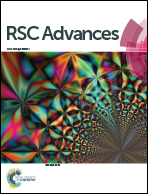Influence of micelle formation on the adsorption capacity of a biosurfactant extracted from corn on dyed hair
Abstract
Human hair contains fatty acids (palmitic, palmitoleic, oleic and stearic acid) that prevent hair dryness and avoid lower hair density of the scalp that can be caused when hair is dyed. These acids are also present in the composition of the amphoteric biosurfactant obtained from corn steep liquor, an agro-industrial stream generated by the corn wet-milling industry. This biosurfactant has a molecular weight of 1542 Da, with a similar mass spectrum to that of Fengycin, a biosurfactant produced by Bacillus subtilis strains. Few studies exist in the literature on the interaction of hair and biosurfactants, nor are there studies on the influence of micelle formation on biosurfactant adsorption capacity. Moreover, this is supposedly the first work in which a biosurfactant is applied to dyed hair. Different concentrations of biosurfactant were applied to dyed hair between 20–50 °C during 2–30 min of treatment. Theoretical models were obtained, which allowed the prediction of the amount of biosurfactant that can be entrapped by dyed hair. A maximum capacity of 10 549 μg g−1 was achieved at 295 mg L−1 of biosurfactant, thus it could be observed that dyed hair mainly adsorbed the biosurfactant above its critical micellar concentration, at which point the biosurfactant is in micellar form. Furthermore, this treatment maintains the dyed hair structure in a good state.



 Please wait while we load your content...
Please wait while we load your content...